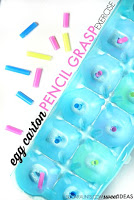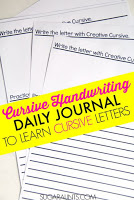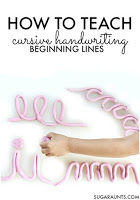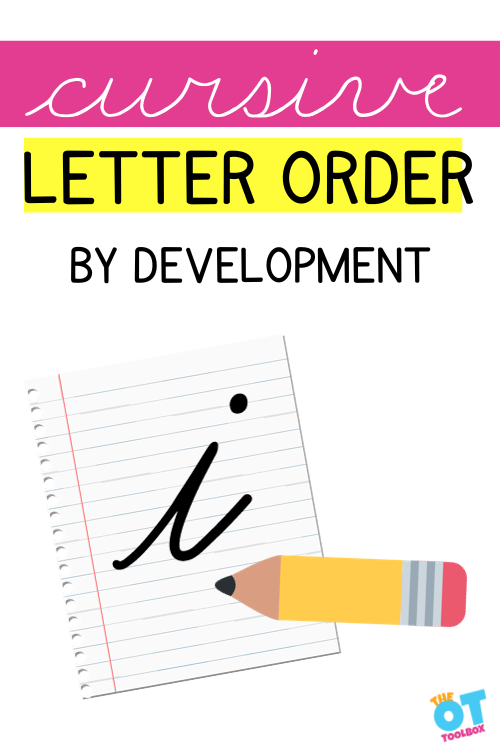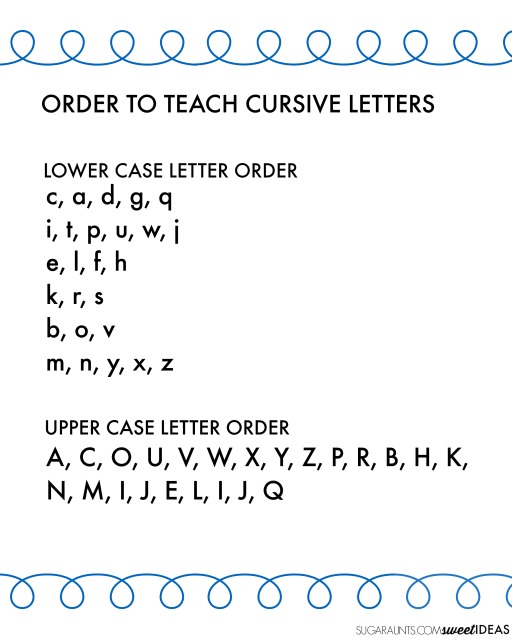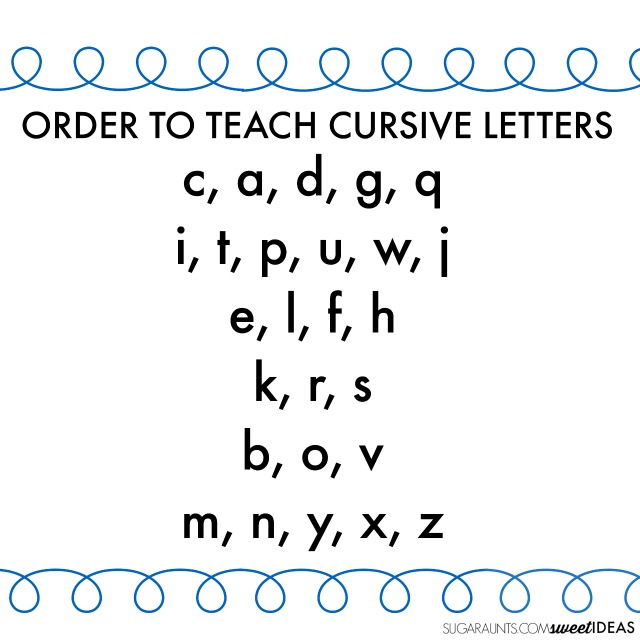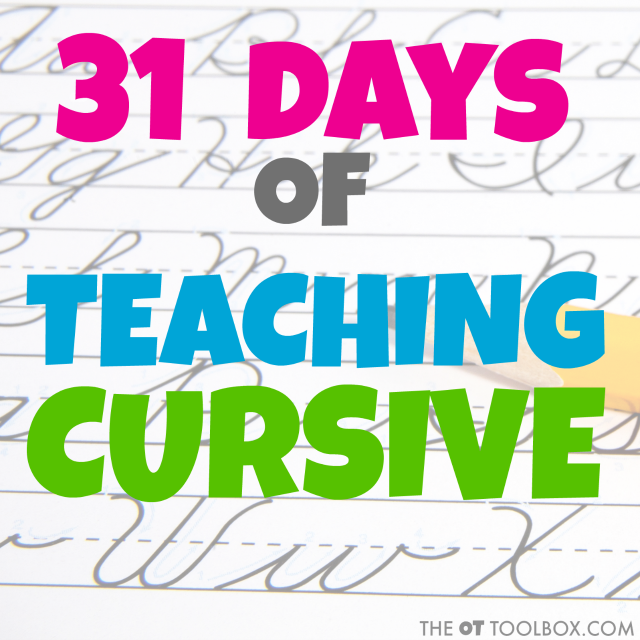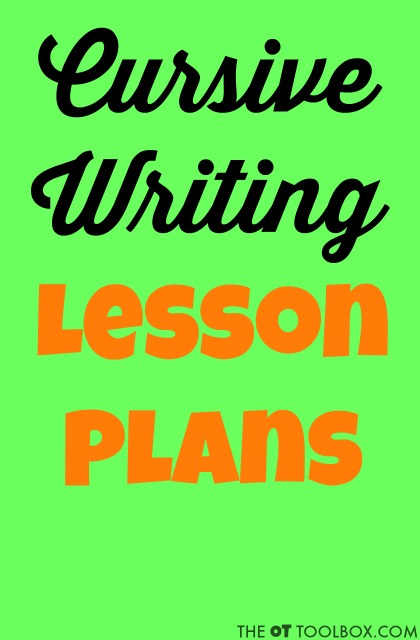Supporting kids by teaching cursive handwriting can be a challenge when there are problems in cursive writing. We’ve covered many issues that contribute to handwriting problems, but when you look at cursive in particular, there are differences to consider. One tool to support an educator or occupational therapy practitioner is a cursive writing screening tool. Below, you’ll find a cursive handwriting checklist to support and overcome problems in cursive writing. Also be sure to check out tips and specific strategies to teach cursive.
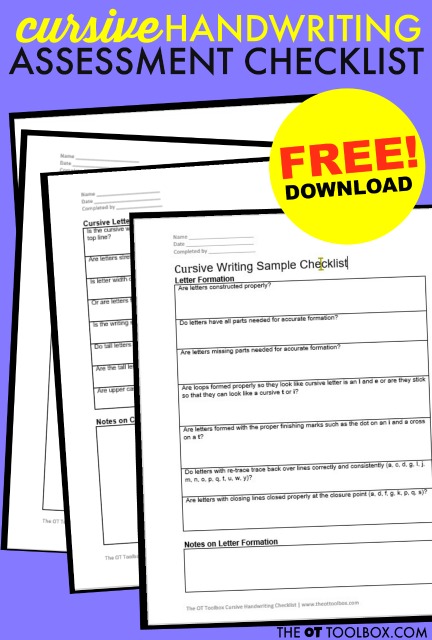
Get your copy of the cursive screening tool at the bottom of this blog post.
Problems in Cursive?
Cursive handwriting can be a challenge to learn. When kids do learn the letters, many times cursive writing takes on a personal style of letter formation. To assess cursive handwriting in the child who is already writing, it takes assessment of the individual parts of cursive writing such as letter formation, speed, rhythm, and legibility.
To diagnose cursive handwriting struggles, it’s important to look at the overall piece of written work. The cursive writing assessment checklist below will help to assess cursive handwriting and work on cursive writing progression.
- Is the writing sample legible?
- Can the individual read it after a period of hours or days?
- Are specific letters identifiable?
- Are letters formed properly, and are they connected correctly?
- Do the letters flow and can join together accurately?
- Are the strokes leaning in a consistent direction?
- Are there added pencil strokes or portions of letters missing?
- Is there consistent use of line and size awareness?
There is a lot to consider when it comes to supporting cursive writing needs!
Looking at all of the parts that make up cursive handwriting can be beneficial to pinpoint areas that need more work in order to promote functional cursive handwriting.
These are all things to look at when assessing cursive handwriting.
Once the specific needs of the student are identified, these strategies can be taught and practiced. Then, a cursive self-assessment of cursive writing can be used by the student for handwriting carryover.
How to Diagnose Cursive Writing Problems
Look at the items below to diagnose cursive handwriting issues and figure out how to work on these areas to improve overall legibility.
Related Read: Try these handwriting accommodation strategies to address a variety of handwriting challenges.
Cursive Handwriting Checklist
Take a look at these considerations when it comes to problems with cursive writing:
- Are letters constructed properly?
- Do letters have all parts needed for accurate formation?
- Are letters missing parts needed for accurate formation?
- Do tow rope letters have a correct connector line? (Tow rope letters include b, o, v, w)
- Are the words easy to read?
- Do the letters flow together with cursive letter connectors accurately and consistently throughout the writing sample?
- Do baseline connectors occur at the baseline?
- Are letters slanting in a consistent direction?
- Is the cursive writing sample overall too large where words are extending up to the top line and stretched out with the wide base of letter?
- Or are letters formed so small so that they can’t be read?
- Is the spacing between words and letters satisfactory?
- Are the letters connected in a way that pencil strokes are smooth?
- Is the student using consistent pressure pressure throughout the writing sample?
- Are letters closed properly wear?
- Are letters formed with the proper finishing marks such as the dot on an i and a cross on a t?
- Are loops formed properly so they look like cursive letter is an l and e or are they stick so that they can look like a cursive t or i?
- Is the writing sample written on the lines and within a given space?
- Are the tails of tail letters (f, g, j, q, y, z) dropping below the baseline?
- Are upper case cursive letters larger in size than lowercase letters?
- Do tall letters (b, d, f, h, k, l, t) touch the top line consistently?
- Are the tall letters larger than the small letters?
- Do letters with re-trace trace back over lines correctly and consistently?
- Is writing speed consistent and accurate?
- is the writing correct but layout and spacing poor?
- Another area to consider when assessing cursive writing is to look at desk and paper positioning.
cursive writing lines
The lines that make up cursive letters support legibility but there is more to it as well. We cover these areas in the cursive writing problems screener.
Children may encounter various challenges when it comes to writing cursive letters on lines:
- Letter Size and Spacing: Maintaining consistent letter size and appropriate spacing between words and letters can be difficult. Some children may write letters that are too large, too small, or unevenly spaced.
- Letter Formation: Cursive letter formation involves specific strokes and connections between letters. Kids may struggle with remembering the correct sequence of strokes or the direction of loops and curves.
- Letter Slant: Cursive writing typically has a specific slant or angle to the letters. Children may find it challenging to maintain a consistent slant throughout their writing.
- Staying on the Lines: Writing within the lines requires fine motor control and coordination. Children might have difficulty staying within the designated lines, resulting in letters that float above or dip below the lines.
- Legibility: Poorly formed cursive letters or inconsistent sizing and spacing can lead to illegible handwriting, making it challenging for others to read.
- Fatigue: Cursive writing can be more physically
Included in the form are areas for notes on handwriting, along with the above questions divided into sections:
- Cursive Letter Formation
- Cursive Letter Connections
- Cursive Letter Size
- Overall Cursive Letter Legibility
This Cursive Handwriting Assessment Checklist is a great way to assess and monitor cursive handwriting progression.
Use this Cursive Handwriting Assessment Checklist to diagnose and identify specific problems in cursive handwriting samples.
Once specific issues are determined, it can be easy to work on those specific skills.
Each child will be different in the way that their writing appears on paper. Even children who are instructed in a group will end up with writing that looks completely different, especially once a personal style is incorporated into cursive writing.


Cursive Problems Screening Tool
If you’re seeing problems with cursive handwriting skills and would like to assess where the breakdown is happening, you’ll want to grab our cursive screening tool. Use it to assess cursive handwriting using a checklist of cursive writing skills.
To get this printable, enter your email address into the form below. The printable will arrive via email so you can print it from any device and from any location.
This cursive screener is also found inside our membership club. Members can log in and then head to our cursive resources.

Colleen Beck, OTR/L has been an occupational therapist since 2000, working in school-based, hand therapy, outpatient peds, EI, and SNF. Colleen created The OT Toolbox to inspire therapists, teachers, and parents with easy and fun tools to help children thrive. Read her story about going from an OT making $3/hour (after paying for kids’ childcare) to a full-time OT resource creator for millions of readers. Want to collaborate? Send an email to contact@theottoolbox.com.


